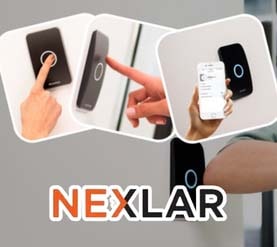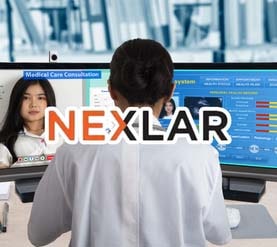
Guide to Commercial Building Access Control Systems
Introduction to Commercial Access Control Systems
Do you need help managing entry and security at your commercial property? Our guide dives into best commercial access systems, showing you how to make your operations smoother. Imagine a workplace where only authorized staff can enter smoothly, and all others are kept out. This guide covers different systems and helps you choose the best one for your needs. Learn how to secure your property, streamline entry, understand who’s coming and going, and make managing your building more accessible. A modern access control system can impress your tenants with its effectiveness and security features.
What is Commercial Building Access Control?
Commercial building access control systems that regulate building entry systems into buildings and specific areas within them. These systems might utilize turnstiles, card readers, PIN codes, or biometric verification like fingerprints or facial recognition. By implementing these systems, building owners can significantly enhance security, control who accesses the building, and protect the occupants and the physical assets.
Types of Access Commercial Control Systems for Buildings
On-Premises Access Control Systems
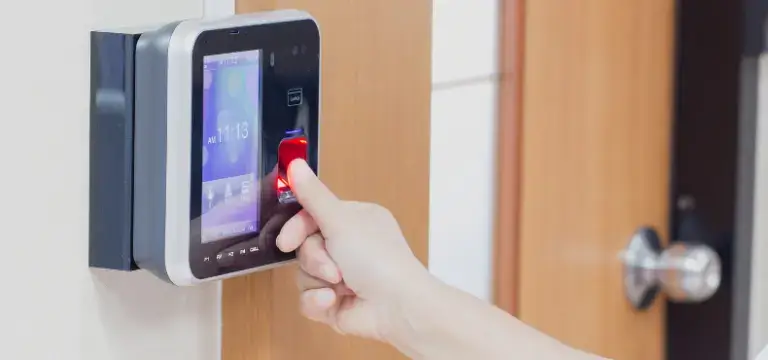
On-premises access control systems are installed directly at your location, giving you full control over the security system. This type of setup is great for places that need very strong security. Since everything is managed locally, you have instant access to all security data and can quickly respond to any security issues. These systems are especially good for places that need constant security checks and can be customized to fit the specific needs of your building or business.
Cloud-Based Access Control

Cloud-based access control systems provide the flexibility to manage security remotely, making them perfect for businesses that require the ability to access and control their systems from different locations online. These systems are easy to scale up or down, allowing businesses to add more access points as they grow. This makes cloud-based systems a convenient and efficient choice for dynamic, modern businesses looking for flexible security solutions.
Mobile Access Control Systems

Mobile access control systems use mobile devices like smartphones as keys, providing a contactless and user-friendly way to access secured areas. This method not only enhances convenience by allowing entry through a phone but also reduces the need for physical contact, making it a cleaner, more hygienic option. This system is especially useful in busy environments where quick and easy access is essential.
Stand-Alone Access Control
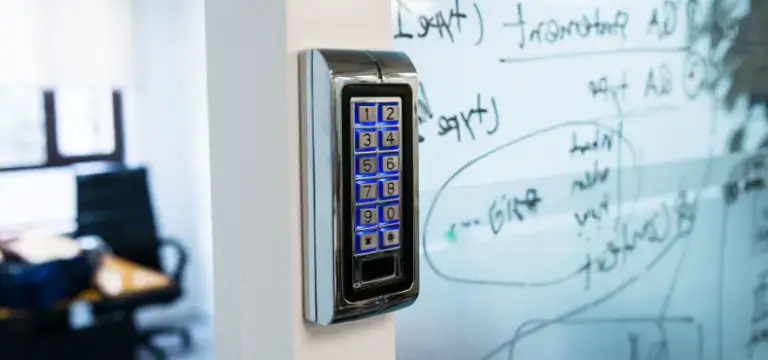
Stand-alone access control systems are ideal for smaller properties or areas that need basic security without the complexity of a networked system. They are typically easier to install and manage, making them a practical choice for places that require straightforward, independent security solutions. These systems work well in settings where simple, effective access control is sufficient to meet security needs.
Implementing a Building Security System
When implementing a building security system, consider the following steps to ensure effectiveness:
Assess Your Needs: Determine the size of the building, the number of access points, and the traffic flow to understand what type of system would best meet your needs.
Choose the Right Technology: Decide whether RFID systems, biometric scanners, or other technologies best suit your security requirements and budget.
Work with Trusted Experts: Engage with professionals experienced in best commercial access systems to ensure proper installation and integration.
Regular Updates and Maintenance: Keep your system updated and check for vulnerabilities to maintain security integrity.
Types of Access Control Credentials for Commercial Buildings & Offices
When securing commercial buildings and office spaces, selecting the correct type of access control credential is crucial. Here’s a breakdown of the various options available, designed to meet different security needs and operational preferences:
Card and Key Fob Systems

Keyless Access Control
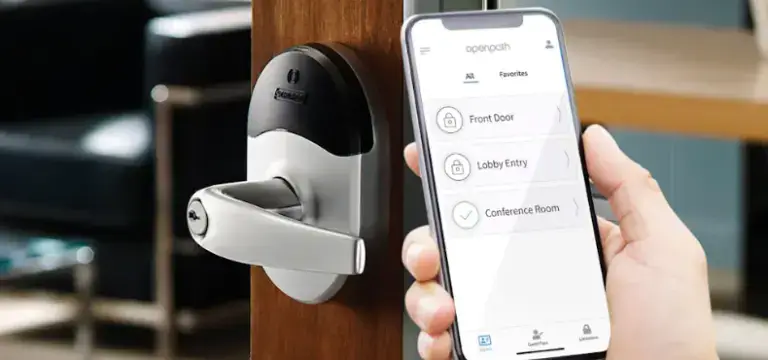
Mobile Access Control
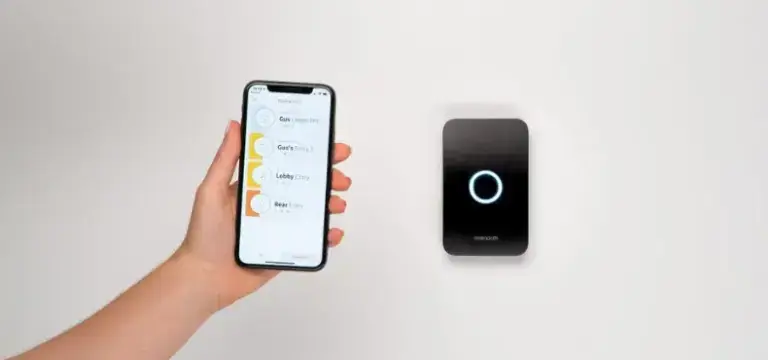
- With building access systems to phone technology, mobile devices such as smartphones become the key. Users can gain entry through a simple tap or swipe on their device, facilitating a touchless and hygienic way to access spaces. This method improves user convenience and adds a layer of security compared to traditional methods.
Biometric Access Control
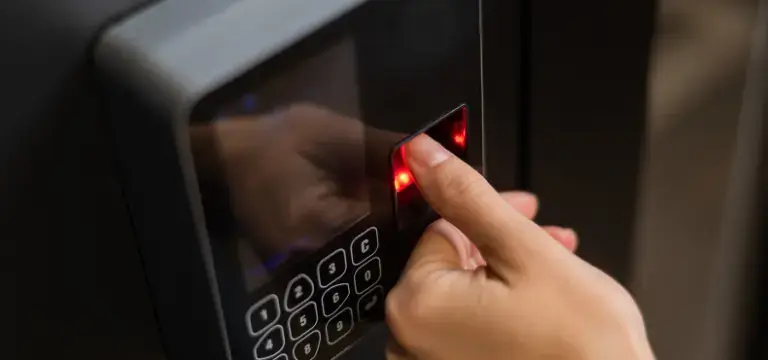
Advantages of Advanced Access Control Options:
These advanced credential options provide several benefits:
Enhanced Security: Biometrics and mobile credentials reduce the risk of unauthorized access, making them suitable for areas requiring stringent security measures.
Convenience: Mobile phones or biometrics systems speed up the entry process and reduce the need to carry additional items.
Hygiene: Touchless access options are particularly beneficial in today’s health-conscious environment, helping to minimize physical contact and the spread of germs.
Whether you’re looking to upgrade or implement a new system, choosing the proper access control credential is essential for ensuring security, efficiency, and user satisfaction in your commercial or office building. Nexlar specializes in providing tailored access control solutions that fit your needs, helping you manage building access systems effectively and securely.
Challenges and Solutions in Commercial Access Control
Managing access in commercial buildings presents various challenges, such as handling high traffic volumes, integrating with existing security systems, and adapting to new technologies. Solutions include using advanced biometric systems for more secure access, integrating systems to provide comprehensive security coverage, and choosing scalable cloud-based systems that can grow with your needs.
Commercial Parking Lot Gate System Costs: Price Breakdown
The cost of a commercial parking lot gate system can vary depending on several factors, but here’s a breakdown to give you a general idea:
Basic Systems (Starting around $2,000): These might include a simple barrier arm with remote control access. They’re suitable for low-traffic lots with basic security needs.
Mid-Range Systems ($3,000 – $5,000): This category offers more features like loop detectors for automatic vehicle detection, intercom systems for communication, and basic access control options using keypads or key cards.
Advanced Systems ($5,000+): These top-tier systems provide comprehensive functionality. Features like license plate recognition, access control software integration, long-range automatic access, and advanced security features like crash barriers are standard.
Important Note: Remember, these are starting points. The final cost can vary depending on factors like:
- Gate type: Barrier arms are generally less expensive than slide or vertical lift gates.
- Features: The more advanced features you choose, the higher the cost.
- Number of lanes: Multiple lanes require additional equipment, increasing the price.
- Installation complexity: Underground wiring or integration with existing systems can affect installation costs.
- Vendor: Prices can vary between vendors, so getting quotes is crucial.
Getting Accurate Quotes:
For a more precise estimate tailored to your needs, getting quotes from qualified commercial parking lot gate system providers is always recommended. They can assess your requirements, Recommend suitable systems and provide accurate pricing based on your chosen features and installation complexity.
Why Choose Nexlar for Commercial Access Systems?
Managing access in commercial buildings presents various challenges, such as handling high traffic volumes, integrating with existing security systems, and adapting to new technologies. Solutions include using advanced biometric systems for more secure access, integrating systems to provide comprehensive security coverage, and choosing scalable cloud-based systems that can grow with your needs.
Talk To An Expert

Contact Nexlar for a Free Consultation
To learn more about how Nexlar can help secure your commercial property with advanced access control solutions, call us at (281) 407-0768 or schedule a free consultation. We’re here to assist you in finding the perfect access control solution tailored to your needs and budget.
Frequently Asked Questions About Building Access Control
What is the difference between door entry and access control?
Door entry systems specifically refer to mechanisms that allow doors to be opened, typically through intercoms, keypads, or key cards. Access control, however, encompasses a broader range of solutions that manage and monitor entry to a building or specific areas within it, often incorporating door entry systems along with other technologies like biometrics and mobile access.
Which access control system is the best?
The best access control system depends on your specific needs. For high-security environments, biometric systems like fingerprint or facial recognition (commercial biometric access control) are ideal. For convenience and modern integration, systems that utilize mobile credentials or access control with mobile phones offer advanced and user-friendly solutions.
What are examples of commercial building security systems?
Examples include:
- Traditional commercial critical fob door entry systems.
- Advanced biometric access control commercial systems.
- Modern setups that allow building access with a phone.
Each system can be tailored to the specific security needs of the building, ranging from basic card entry systems to comprehensive solutions integrating video surveillance and intrusion detection.
How do I secure my office building?
To secure an office building, implement a layered security approach. Start with a reliable access control system, add video surveillance, ensure proper lighting around the building, and train staff on security protocols. Regularly updating and assessing the security measures is also crucial to address potential vulnerabilities.
Where are building access control systems installed?
Building access control systems are typically installed at all main entry points, including front doors, service entrances, and parking garages. They can also be installed in internal areas like server rooms or labs to restrict access to authorized personnel.
How can I make my building more secure?
To enhance building security, consider upgrading to access control systems with mobile phone capabilities for better management and flexibility. Implement commercial biometric access control for high-security areas and integrate your access control with alarm systems and video surveillance for a comprehensive security solution.
What is a building access control system?
A building access control system is a mechanism or set of mechanisms that manages access to a building or specific areas within that building. It uses credentials, which can be physical (like key cards or fobs) or digital (like mobile apps or biometrics), to authenticate and authorize entry, thereby enhancing the security of the building by controlling who can enter and at what times.
Recent Posts
Commercial Security Camera Installers Near Me
- July 25, 2022
Commercial Security Gate Systems
- July 25, 2022
Commercial Security Guard Services
- July 25, 2022
Commercial Security Integration
- July 25, 2022
Commercial Security Surveillance Systems
- July 25, 2022
Commercial Building Access Control Solutions
Door Access System Installation
- July 14, 2022
- admin
Commercial Security Systems in Houston, TX
- July 24, 2022
- admin
Commercial Security Systems for Healthcare
- July 24, 2022
- admin
Commercial Security Surveillance Systems
- July 25, 2022
- admin
Commercial Building Access Control Frequently Asked Questions
Yes, most cities and counties require access control permits. Some cities, like Houston, TX, may call it an e-lock permit. Most cities also require gate access control permits to ensure your commercial building has easy access to a fire truck. Permits are required to ensure people inside your building have free egress in the event of a fire.
Obtaining an access control permit for a commercial building often involves several steps, and the specific process can vary based on local regulations, building codes, and jurisdictional requirements. Here’s a general overview of the process:
Research Local Regulations: Before beginning the process, familiarize yourself with local building codes, safety regulations, and any specific requirements related to access control systems in commercial buildings. Some cities or regions may have specific guidelines or standards.
Preliminary Assessment: Before applying for a permit, it’s a good idea to have a professional assess your building. This assessment will determine the best access control system for your needs and ensure it complies with local regulations.
System Design and Proposal: Develop a detailed design of the proposed access control system, including placement of devices, integration with other systems, and any required modifications to the building’s infrastructure.
Submit Application: Depending on your jurisdiction, you’ll likely need to submit an application to a local regulatory body, such as a building department. This application will typically include:
Detailed plans of the proposed system
Information about the devices and equipment you intend to use
Compliance with local codes and regulations
Any other required documentation or fees
Inspection: Some jurisdictions may require an on-site inspection either before or after the installation of the access control system. Inspectors will ensure that the system is installed correctly and complies with local regulations.Installation: Once you have the necessary permit(s), you can proceed with the installation of the access control system.Final Inspection and Testing: After installation, there may be a final inspection to ensure everything works properly and adheres to the approved plans. This could involve functional tests of the system and checks to ensure it doesn’t interfere with other building systems, like fire alarms.Documentation: Keep all documentation related to the permit, inspections, and system specifications. This will be useful for future reference, maintenance, or modifications.Ongoing Compliance: Be aware of any ongoing requirements, such as periodic inspections, maintenance standards, or reporting requirements, to maintain compliance with local regulations.
Renewals or Updates: Depending on your jurisdiction, you may need to renew the permit or get approval for significant modifications or upgrades to the system in the future.
Remember, the specific steps and requirements can vary widely based on where your commercial building is located. Always consult with local authorities, professionals, and legal counsel to ensure you’re meeting all necessary requirements.
Selecting the right access control system for your building is essential for ensuring security, ease of use, and efficient building management. Here’s a step-by-step guide to help you make the right choice:
Determine Your Needs:
- Size of the Building: Larger buildings might require more sophisticated systems.
- Number of Users: Think about the number of employees, residents, or other users who will need access.
- Levels of Access: Determine if you need different levels of access for different groups (e.g., employees, management, visitors).
- Future Growth: Consider whether the system can be expanded or upgraded as your needs change.
Features and Technologies:
- Type of Authentication: Options include key cards, key fobs, biometrics (fingerprint, facial recognition), mobile access, and PIN codes.
- Integration: Consider how the system will integrate with other building systems, such as video surveillance, alarms, or building management systems.
- Remote Access: Determine if you need the ability to manage and monitor the system remotely.
- Audit Trails: Check if the system provides logs of who accessed which areas and when.
- Visitor Management: Think about how you want to handle temporary access for guests or contractors.
Security and Reliability:
- Encryption: Ensure that the system uses strong encryption to protect data.
- Backup and Recovery: Check how the system handles data backups and recovery in case of failures.
- Tamper Alerts: Some systems alert you if someone tries to tamper with a door or access point.
Usability:
- Ease of Use: The system should be user-friendly for both administrators and end-users.
- Training: Consider how much training will be required for staff.
- Support: Ensure the vendor provides adequate support and training resources.
Budget:
- Determine your budget for both the initial installation and ongoing maintenance or subscription fees.
- Consider the total cost of ownership, including hardware, software, installation, and maintenance.
Vendor Reputation:
- Experience: Look for vendors with a track record in your industry or type of building.
- Reviews and References: Check reviews, ask for references, and speak to other businesses using the system.
- Support and Warranty: Ensure the vendor offers adequate post-purchase support and warranty options.
Compliance and Regulations:
- Check if there are any local regulations or industry-specific standards that your system needs to comply with.
Installation and Maintenance:
- Installation Complexity: Determine whether you can handle installation in-house or if you’ll need professional installation.
- Maintenance: Consider how easy it is to maintain the system, update software, and replace parts.
Pilot Testing: If possible, conduct a pilot test of the system in a specific section of your building before a full rollout.
Consultation: Consider consulting with a security expert or access control specialist to evaluate your building’s unique needs and recommend appropriate solutions.
By carefully evaluating your needs, considering the available features, and doing thorough research, you can select the right access control system that offers both security and convenience for your building.





